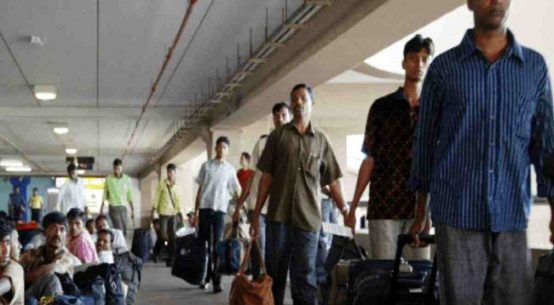So far in 2023, Bangladeshis have survived the threat of one major cyclone, consecutive mild to severe heatwaves since the beginning of summer in April and occasional Nor’wester.
Summer in Bangladesh is officially over, but the first day of monsoon on Thursday did not arrive with any relieving signs, especially to the people in the greater Sylhet region.
According to the Bangladesh Meteorological Department, 221 mm of rainfall was recorded in the Sylhet district on Thursday, the highest in Bangladesh.
As much as 35 mm of rainfall was recorded in Srimangal, which on average, experiences the highest rainfall in a calendar year in Bangladesh.
Analysts tasked to predict early flood warnings have been considering the heavy rain as an ominous sign.
Arifuzzaman Bhuiyan, the executive engineer at the Flood Forecasting and Warning Centre, or FFWC, of Bangladesh Water Development Board, or BWDB, said that due to heavy rainfall upstream, the water level of Surma and Kushiara rivers might rise to a significant level and certain parts of Sylhet and Sunamganj districts may be hit by flash floods.
“Since the beginning of June, the monsoon has started influencing Bangladesh’s weather, increasing the rainfall trend in the country and upstream basins. Especially since the beginning of this week, there has been heavy rainfall in the northeastern region of the country and adjoining upstream areas,” he said.
He has a reason to worry.
Last year, the greater Sylhet region, as well as Netrakona and Kishoreganj – the Haor or back swamp region – was severely hit by one of the deadliest floods in living memory, submerging hundreds of thousands of hectares of arable lands, full of ready-to-be harvested crops.
The floods impacted the urban and rural lives equally, as thousands of people temporarily became homeless, and at one point, the whole of Sylhet City went underwater.
Arifuzzaman said the FFWC’s latest projection indicates the water level of major rivers, including Brahmaputra-Jamuna, Dharla, and Teesta in the northern part of the country, may continue to rise.
In the last week of this month, the water level of Jamuna may go over the danger zone.
The weather forecast for the next two weeks predicts light to moderate rainfalls over the southeast hilly basins and coastal areas for the next two weeks.
The Met Office, however, dismissed the possibility of a major flooding during the period.
According to the Met Office, some parts of the country have yet to get the Midas touch of monsoon.
There was a heatwave somewhere in the country on the eve of heavy rains on the first day of monsoon.
Rajshahi recorded a maximum day temperature of 40.5 degrees Celsius. The mercury rose to a maximum of 34.1 degrees Celsius in Dhaka.
Meteorologist Abdur Rahman said: “An intense heatwave is sweeping over Rajshahi, Jashore and Khulna. Apart from this, mild to moderate heatwaves are sweeping over Rajshahi, Khulna, Dhaka, and Barishal divisions.”
“Night temperatures are likely to remain almost unchanged across the country. The day temperature may remain almost unchanged in Rangpur, Rajshahi and Khulna divisions and decrease slightly in other parts of the country.”


